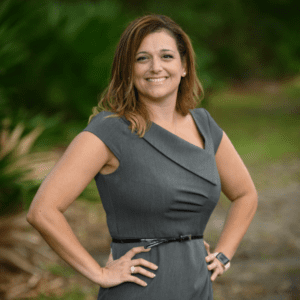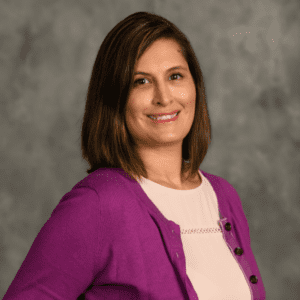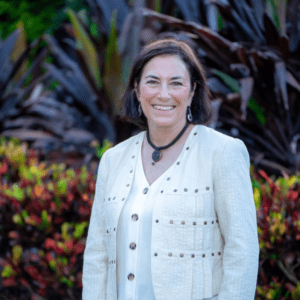

“At Wellbox, we have a team that believes in optimism and has a can-do attitude. When starting a business, you need those elements from them. You also need a secret ingredient of ‘I want to be of service’ and that’s what we found at Wellbox. That’s the magic of Wellbox in the last five years,” said Nat Findlay, Chief Executive Officer at Wellbox. We couldn’t agree more. As we celebrate Wellbox’s five-year anniversary, we reached out to our incredible leadership team to share our history and the progress we’ve made. Read their responses below.


Nat Findlay, Chief Executive Officer
A: Around 2008 and 2009, electronic medical records and medical devices were truly starting to disrupt primary care. It was at this time that I was working on a patient portal that would be able to text and email patients as a form of an early subscription-based consumerized telemedicine. This way patients did not have to go to the doctor in person, but it was still a little early within the industry for this to get started.
It was then I became involved in the telemedicine wireless space where patients could use activity monitors and glucometers. Wellbox began with the idea that providers would send boxes that could help patients stay well with devices such as glucometers so their health data could be monitored. At the time, remote patient monitoring codes were not yet available. In October 2014, I found out that CMS was starting a new chronic care management code that would take effect January 1, 2015. This would change how care was provided and which patients would qualify.
At that point, Steven Ferguson, Chief Operating Officer at Myca Health Inc., and I went to 10 different practices to pitch the idea of outsourcing chronic care management with Wellbox. One of those practices was in Louisville, Kentucky where Steven collaborated with a retired physician who presented CCM to the practice’s patients and signed up 98% of the patients. The 2% who were unable to sign up for the program only had one chronic condition and did not qualify.
The original vision of the company was to become an extension of small to mid-size primary care practices and offer telemedicine under the Wellbox brand. Our goal was based in the hope that patients would appreciate the interaction. I didn’t realize the benefits and impact behind the program measuring clinical results and how those could then reduce costs. Now, there are more codes available for expanded care that go beyond the original 20 minutes, which can allow for more comprehensive care. Over time, we also realized that the clinical and financial impact was greater within larger populations and began to work with larger practices, health care systems and ACOs.


Patrick Stevenson, Chief Operating Officer
A: We have a leadership team that is committed to do well, be well and live well. We incorporate that into our personal lives, our colleagues’ lives and the lives of the patients and practices we support.
We look to hire folks that believe in the same purpose.
Since everything we do is to make patients’ lives better, we look for ways in how we can make Wellbox even better so we can do just that. One way we have done this is by building a culture around the idea of “Roll up your sleeves and help get the job done.” This teamwork mentality has allowed us to adapt and pivot quickly over the years. It also helps as we continue to grow and build a team that is committed to bettering healthcare. I’m very proud of the team we have built and our business achievements, including being ranked #201 on the Inc. 5,000 Fastest Growing Companies list, are a testament to that.
A: The healthcare industry has changed in several ways. It continues to push towards value-based care while also having a greater focus on patient outcomes and a greater need to leverage technology to support practices and patients.
Wellbox continues to incorporate technology to help support practices’ and patients’ needs and it has done this by implementing services like Remote Patient Monitoring and Annual Wellness Visits. These solutions identify care gaps, drive patients towards the test and exams they need for better prevention, and remotely monitor them outside of office visits to keep them healthy and safe.
As it grows, Wellbox is also expanding into the self-insured space to help employers with their chronically ill employees so they can focus on their health and reduce healthcare costs.


Cole Naldzin, Senior Director of Engagement
A: At Wellbox, our solutions are purpose-built for engagement. By making care management solutions easy to implement, deliver and obtain we can increase participation and engagement enough to have significant clinical and financial outcomes for one of America’s highest-risk, highest costs populations.
Provider engagement, both with the program and the patient, is a critical success factor for long-term participation and retention and we know, based on reports published by Medicare, that the longer patients participate in a care management program the better their clinical and financial outcomes. As a result, we strive to ensure patients and providers alike are educated and informed on the goals and benefits care management and remote patient monitoring can have from their first interaction with us and we work to customize their journey based on their unique needs and requirements. In the end, we know that if caring experienced nurses deliver a robust and customized care management program to people living with chronic illnesses we can make a huge difference in the lives of the patients, while also helping healthcare providers achieve their goals.
A: One of my favorite things about working at Wellbox is the stories I hear from the patient engagement specialists and nurses. There was a particular case of a nurse identifying that one of her patients was not taking their medication as prescribed and after gentle probing identifying it was a financial concern – her medication was costing her $900 to fill! Our nurse did an in-depth comparison of her prescription at all surrounding pharmacies and was able to find a location that cost only $150. Just the act of providing a prescription card, a coupon and a participating pharmacy ensured that this patient could be compliant with their diabetes medication. These are the little things that keep patients out of the hospital and keep their conditions from worsening. We have received hand-written thank you notes from people, like one woman who had fluid in her lungs but was just going to “wait it out” until her next appointment. We got her into her doctor that very day and prevented a potentially dangerous situation for her as well as what was sure to be a hospital admission if the condition were allowed to worsen.


Grayson Suorez, Senior Director of Operations
A: Wellbox keeps our program unique to our providers, patients, and staff. Scaling is a matter of bringing on the right amount of staff to fit the panel of patients our clients bring us, not fundamentally changing the way we operate.
For providers that means we build a workflow that functions the same in their electronic health records as their own nurses do. No matter how large Wellbox becomes, we’ve created a workflow that functions specifically for that provider and tailors to their needs.
For our patients, we quickly found out that asking patients a checklist of the same questions each time does not engage them. We built a modular program where we still hit the major points every time we speak to a patient but we will pick several areas to dive in depth. Whether it’s to go find social services that satisfies that patients’ needs or do an in-depth medication reconciliation, what we’re doing each month is making sure the patients receive a service that our system predicts will be most valuable to them. So, any of our nurses can call any of our patients and ensure that patient is still getting an individualized service.
When it comes to our staff, most companies are trying to find medical assistants and pay them hourly to sit down with a panel of patients and try to contact as many of those patients as they can. Instead, we have found nurses from all over the country who can work remotely, and we work with the nurse to decide what size panel works best for him or her to best suit their needs. Instead of trying to find the best nurses we can to suit the program we have, we are able to find the best nurses and suit the amount of work to their personal needs.


Jessica Egger, Director of Clinical Services
A: For the chronically ill population, improving care requires more than just medication adherence and healthy behaviors. Chronically ill patients are more likely to need supportive services to help them with activities of daily living, transportation arrangement and other social services. They are more likely to rely on an informal caregiver such as a spouse, relative, or friend for assistance.
Wellbox has a proven model focused on closing these care gaps by means of a highly qualified nursing team working in coordination with the provider to manage care transitions and chronic care services remotely with their patients. Wellbox nurses focus on better patient engagement to improve chronic care via monthly CCM and RPM.
Our nurses engage those patients with chronic conditions who are able and willing to participate in their care. We educate patients to empower them to manage their conditions. Wellbox uses both CCM and RPM to allow the nurse to gather and report real-time data to the providers in order to minimize or even prevent exacerbations of the chronic illness.
Simply stated, the focus on improving quality of care through CCM and RPM will continue to have a significant, positive impact on clinical and financial outcomes – specifically as it relates to reduction of unnecessary hospitalizations.


Rosemary Kelly, Chief Financial Officer
A: Under normal circumstances, building a start-up business, while an incredibly exciting and rewarding opportunity, is not without its challenges. In the case of Wellbox though, the company was not only building the business but pioneering an industry at the same time. In 2015, when Wellbox was founded, the concepts of value-based care, population health, remote patient monitoring and chronic care management were really more ideas than fully developed concepts. Reimbursement codes for chronic care management had just been released and the market was simply trying to understand these codes and the implications on practices. In the early years of the company much of the challenges centered around driving awareness within the market and educating providers on why forming a partnership with Wellbox created a win-win solution for their chronically ill patients and their practices. As with any evolving concept, we really worked closely with our initial providers and partners to continually pivot and adjust our service offering, where needed, to assure we were delivering the best possible care to these chronically ill patients. Wellbox continues today to evolve as the market demands and we have built a scalable business model to now offer additional value-based services like remote patient monitoring, annual wellness visits and the like.


Ali Dufour, Chief Technology Officer
A: Wellbox has proven that the effective deployment and use of RPM can significantly extend the care delivery chain outside of doctors’ offices. Over the next decade, healthcare is expected to see a huge amount of technological change. Artificial intelligence (AI) and the Internet of Things (IoT) will play a huge role in this transformation. Wellbox has the building blocks in place to lead that transformation by leveraging both technology and its incredible and dedicated team.
In just five years, we’ve built best-in-class virtual care solutions that are making a significant, positive impact on chronic illnesses in America. The impact includes the countless positive stories we’ve received from patients, the clinical outcomes we’ve achieved and the incredible culture we’ve built among our staff. It has been a remarkable five years and we look forward to the next five!
Share to© 2021 Wellbox Inc. All rights reserved | Privacy | Terms of Use